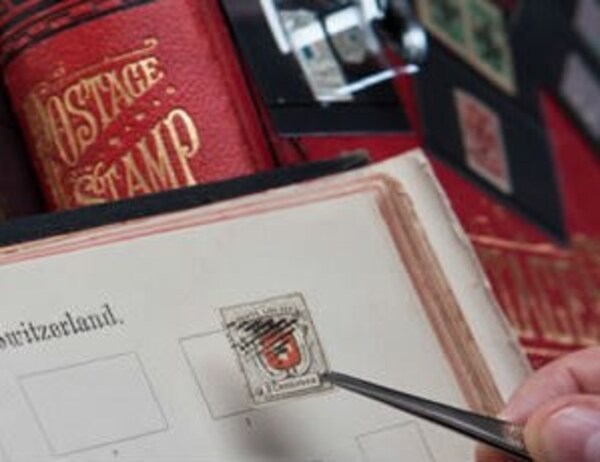Edward, Prince of Wales, was fifteen when we find the first hint of Royal philatelic interest. His entry for 8 April 1856 reads: "London: A rainy day. In the afternoon we went to De La Rue's Manufactory which was very interesting."
On that first visit, Prince Edward and his younger brother, Alfred, were given some blocks of stamps prior to being perforated; these were signed by an officer of the Inland Revenue. Together with an account of the visit, they served as appropriate souvenirs. We can assume that the younger Alfred's interest was pricked, as he became an accomplished life-long collector in the style of the day, keeping many rare 'foreign' classic stamps, as well as stamps from the British Empire. Places visited during his successful naval career featured heavily. It is indeed Alfred who is credited with starting the royal collection, and from his time as a fourteen-year-old midshipman, was sending home letters bearing stamps of the countries that he visited. A keen life-long collector, who became the first Honorary President of the London Philatelic Society; he was notoriously short of funds (philately and rich living have been blamed)! Shortly before his death, he sold his stamps in 1900 to his older brother (soon to be Edward VIII), who promptly passed it on to his son, Prince George.
The Prince, later King George V, was to become the force behind the Royal Philatelic Collection; certainly the greatest stamp collection to have ever existed. As a younger man, he exhibited his own father's stamps with the proofs and sketches he obviously had at his disposal. We can only have some sympathy for this famous philatelist, when he himself ascended the throne. The pressure on him to oversee an exceptional period of stamp design must have weighed heavily, especially as the early experiments for his British stamps were roundly criticised. In November 1910, it was South Africa who issued the first stamp of his reign to bear his image. This marked the beginning of a truly magnificent period of stamp production and design.


 General
General
 General
General
 General
General